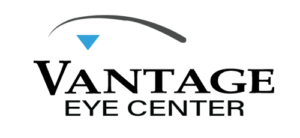
Here’s how to take care of your eyes at every age.
In Your 20s and 30s: Protecting the Vision You’ve Got
If you’re in your 20s or 30s and don’t wear glasses, you may be used to breezing through vision screenings—no worries, no prescriptions. Enjoy it! But clear vision doesn’t always mean healthy eyes.
Even without vision correction, regular eye exams are essential. The American Optometric Association recommends a comprehensive eye exam every two years for adults ages 18 to 39. These visits help your eye doctor monitor your eye health and catch early signs of problems before symptoms appear.
Now’s also the time to build good habits that will protect your eyes for the future:
-
Wear Eye Protection: Whether you’re working around flying debris or playing contact sports, protective eyewear helps prevent injuries.
-
Use Sunglasses with UV Protection: Prolonged sun exposure increases the risk of cataracts and eye cancers. Choose sunglasses that block 100% of UVA and UVB rays.
-
Manage Screen Time: Reduce digital eye strain by taking regular breaks—try the 20-20-20 rule: every 20 minutes, look at something 20 feet away for 20 seconds.
-
Eat for Eye Health: Incorporate leafy greens, omega-3-rich foods like fish, and lean proteins into your diet to support healthy vision.
If you already wear glasses or contacts, this decade might be a good time to explore LASIK or other vision correction procedures. LASIK can reduce or eliminate the need for corrective lenses—talk to your eye doctor to see if you’re a candidate.
In Your 40s and 50s: Adapting to Change
Around your 40s, it’s common to notice changes in your near vision. This is usually due to presbyopia, a natural age-related stiffening of the eye’s lens that makes it harder to focus up close. You might find yourself holding your phone or book at arm’s length to see it clearly. Reading glasses can help—and your eye doctor can provide the right prescription.
Annual eye exams become even more important during these years. The risk of conditions like glaucoma rises after the age of 40, and early detection and treatment are crucial for preventing vision loss in the future. If you have diabetes, it’s especially important to have yearly medical eye screenings for diabetic retinopathy. Conditions like glaucoma and diabetic retinopathy often develop without noticeable symptoms, so you might not realize something is wrong. Routine comprehensive eye exams can identify signs of disease, allowing you to begin treatment before you have any vision changes.
You may also experience intermittent episodes where your eyes feel dry, particularly during allergy season or after spending a lot of time looking at computers or phones.
Dry eye can make you more susceptible to eye injuries or infections, so you should ask your eye doctor about how to manage dry eye symptoms. Using eye drops, staying hydrated, and taking regular breaks from screens can all help alleviate dry eye symptoms.
In Your 60s and Beyond: Staying Ahead of Eye Disease
Continue regular screenings for glaucoma, diabetic retinopathy, and ensure your vision prescription is current in your 60s and beyond..
Be proactive about your risk for macular degeneration, especially if you have a family history. Your eye doctor may recommend supplements or monitor your retina closely. If Wet AMD develops, timely treatment can help protect your central vision.
Cataracts are another common concern in older adults. They cause cloudy or blurred vision, especially in low light. When cataracts interfere with your daily life, surgery can restore clear sight—and is usually covered by Medicare and most insurance plans.
Age-related changes in your skin and facial structure can also affect your vision. Drooping eyelids, caused by a loss of skin elasticity, can narrow your field of vision. Eyelid surgery (blepharoplasty) can correct this functional issue without significantly altering your appearance.
Some patients also benefit from a Botox brow lift, which gently lifts the eyelid and brow area by relaxing facial muscles. Your eye doctor can help determine the best option for you.
Prioritize Your Eye Health
Vantage Eye Center is the Central Coast’s leading eye care facility, with locations in Monterey and Salinas, California. From routine exams to advanced surgical treatments, our experienced medical team is here to help you protect and preserve your vision. Call us to speak with a member of our medical staff today or use our online appointment form to request an appointment.
